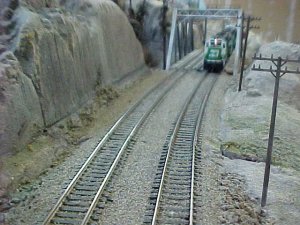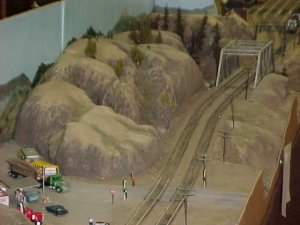Having the tracks always cross at right angles is not necessary. The main reason for that is to properly connect with other modules built to specifications meant to provide uniformity for large groups setting up large displays. (in my humble opinion)
There are groups (I think there is one in Kennewick, WA) that have a unique angled track for the "local" that meanders from module to module (snake like). Personally, I think the straight tracks like N-trak recommends are better if you intend to join with the modules of other modelers to display and run trains. If you wanted to build several modules to be used with N-trak, you can be creative with the tracks between your own modules. It is only at the extremes when you connect with the other modules that the placement of the tracks must meet specifications. You are also supposed to maintain 3 continuous tracks. You can't reduce the number of tracks and conform to N-trak standards.
There are variations of modules such as Bend Track, oNe Track, and TwiN Track. (I think I got them right) that may have adapter modules so they can connect to N-trak modules. If you are interested in the researching some of them, you might try
http://www.railserve.com and check out the clubs and organizations.
As for a way to connect modules, it is usually done with short sections of track where the rails are not ballasted. Some clubs have worked out ways to hide this, so you don't have sections of track that alternate with sections that are not ballasted.
On two of my modules that I wanted to not have this short section of track showing between them, I took the rails right to the edge of the module and connected them with a small length of brass wire that slid into a piece of brass tubing that was soldered to the rail on each module. This held the track in allignment as well as provided a path for electricity to travel if required. I have attached a picture that will hopefully show this connection. (It happens to be on an HO module, but it should work for N as well.)
One of the problems with this arrangement is that the track can be damaged VERY easily when transporting the modules, so consider this before building your modules this way.

You may also notice that the tracks between these modules do not cross the gap perpendicular to the edge of the module. I wanted to get away from the straight line look.




